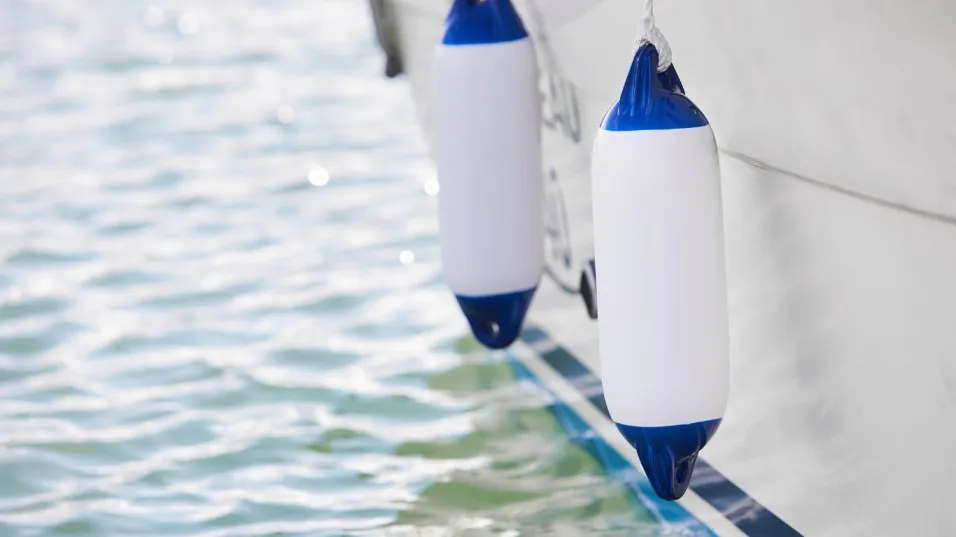Choosing between Foam-filled Fenders And Traditional Rubber Fenders for ship protection can be challenging. Foam-filled fenders offer soft landings, durability, and low maintenance, but come at a higher cost.
Traditional rubber fenders are reliable and cost-effective, but they require more maintenance. Factors like vessel size, budget, and environmental conditions influence the choice.
Understanding each fender’s features and suitability is crucial in making an informed decision.
In this article, we will give you detailed insights into comparing Foam-filled Fenders And Traditional Rubber Fenders.
How do compare to foam-filled fenders and traditional rubber fenders?
Foam-filled fenders compared to traditional rubber fenders:
Foam-filled Fenders:
- Soft landings: Airbags absorb impact to make docking gentler.
- Durability: It stays strong against damage and lasts a long time, keeping you safe.
- Low maintenance: It needs very little care, so it costs less to maintain.
- Floatability: Float easily, good for when you need to stay afloat.
- Higher cost: Usually, it costs more at the beginning because it uses fancy technology and special materials.
Traditional Rubber Fenders
- Reliability: Famous because they’re strong and work well.
- Cost-effective: These fenders cost less initially than foam ones, but they might need more upkeep later on.
- Harder landing: Offer less cushioning upon impact compared to foam-filled fenders.
- Higher maintenance: Require more frequent checks and repairs, potentially increasing long-term costs.
Foam-Filled Fenders- The Soft, flexible option
As its name gives an idea, Jerry Marine foam-filled fenders are like a soft pillow that prevents the ship when it docks. Its outer body is of nylon( a synthetic plastic material). Its interior uses foam-filling, which is a game changer.
Here is what sets it apart:
- Soft landing: When your boat bumps into a fender, it soaks up the hit, like airbags in cars. When a car crashes, airbags pop out and stop people from getting seriously hurt.
- Less Pushback: Foam-filled fenders are different from other fenders in that they don’t push back as hard. This is good because it means your boat won’t get pushed away too much.
- Durability: These fenders last longer than regular rubber ones. They are also less likely to get damaged and are not bothered by environmental issues, which is good.
- Tendency to float easily: Foam-filled fenders float easily. When there’s a natural disaster, the fender needs to float, and a Foam-filled fender does so perfectly.
- Low maintenance: A tough fender filled with foam needs less care and is always ready for the worst situations.
Cost
Foam-filled bumpers cost more than rubber ones. But they last longer, so they often end up saving money.
Traditional Rubber Bumpers are tough rubber. They come in lots of sizes and shapes and can fit any boat easily, which is why many boat owners prefer them.
It’s hard to find good prices for good stuff. But Jerryborg Marine offers ship protection products. They’re a top rubber fender maker in Quingdao.
We’ve been in the business for 15 years. People from everywhere buy from us. Our company is what people trust for marine tech.
Let’s understand its features.
Traditional Rubber Fenders
- Hard Landing: Rubber fenders don’t absorb impacts as well as Foam-Filled Fenders. This is because rubber fenders are made of tough rubber, so when something hits them, it feels a bit hard.
- High pushback: This thing bounces a lot because it’s made of tough rubber. If you compare a rubber ball to a balloon, you can tell which one hits harder.
- Durability: Rubber fenders last long, but not as long as foam-filled ones. They might tear in natural disasters, but it’s easy to check for damage.
- Tendency to float: A heavy fender is harder to float, and it can soak up water easily.
- High maintenance: It needs regular checkups because it requires more fixing and care. Also, it can get worn out or torn in sunny or salty areas.
Cost
This product costs less than foam-filled fenders. But, because it needs a lot of upkeep, buying it might end up costing more over time.
Conclusion
Deciding which fender to pick is difficult because each has its own speciality. Your decision also depends on the size of your boats, your money, your environment, and your stuff. Foam-filled fenders work best for big boats.
If you have enough money, choose foam-filled fenders. If you don’t, you can choose rubber fenders instead.
I hope you get an idea, about the fenders. If you’re searching for a trustworthy company that provides you with one-stop solutions for ship protection, then just mail us at sales@jerryborgmarine.com about your query.
Our team will be in touch with you. We will ensure that you get high-quality service from our side.
Faqs
Which fender type is more commonly used in marinas and commercial ports?
Foam-filled fenders are used for large vessels because of their high absorption power, and rubber fenders are used for small—medium vessels.
Which fender type is suitable for rough water conditions?
Foam-filled fenders are mostly suitable for rough conditions. They are lighter in weight, which helps them float easily. Rubber fenders require more maintenance and can tear and wear off in those conditions.
Are foam-filled fenders more expensive than rubber fenders?
Yes, foam-filled fenders are more expensive because their material requires high production costs and extensive technology.

